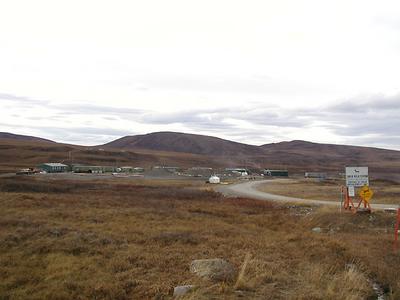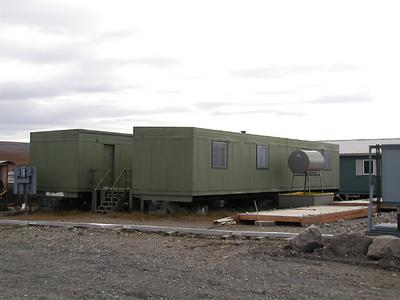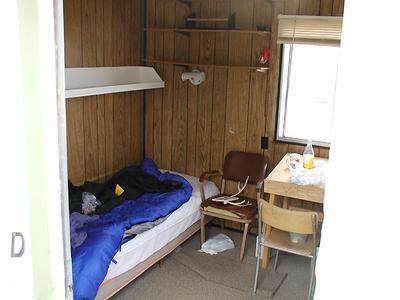14 September, 2002
9/14/02
Fond Farewell to Toolik
Today is my last full day at Toolik Lake. Tomorrow we head to Coldfoot and
Wiseman for several days to collect some Cucujus larvae at the northernmost
edge of their range. We have been very successful in meeting the goals of our
stay here. All of the long term study habitat sites are established, we have
determined the cold weather adaptability for this time of year for several
insect species and we have collected more than 400 Click Beetles for
transport back to Fairbanks and to Notre Dame. Our incomplete task has been
the collection of enough Carabid beetles to transport and study. We have a
small number, but were hoping to find numbers similar to the Click Beetles.
The Carabids are freeze tolerant, meaning that they have the ability to
actually freeze and survive. While this research team is primarily interested
in freeze-avoiding insects and the antifreeze proteins that make them so,
further research on the mechanisms of freeze tolerance is also of interest.
With a Carabid hunt as our final task we set off this morning to find the
rocky slopes of low hills and ridges where Carabids have often been found.
After a morning of searching we had found a total of about three dozen
beetles, enough to start work on, but somewhat short of the number we had
hoped to find. The lack of Carabids has presented a somewhat perplexing
problem. In the spring we found large groups of Carabids under rocks in many
of the same areas where we have looked on this trip. We have discussed many
possibilities for the Carabid disappearance. My own personal theory is based
on the fact that survival temperatures for the Carabids are different now. In
the spring the Carabids were able to survive temperatures as low as -25
degrees Celsius. Now in the fall we are getting only a few survivors (3/20)
at -15 degrees Celsius. Considering the lack of beetle groups under the
rocks and the lessened ability to survive colder temperatures, my
hypothesis is that the Carabids are not yet prepared for winter. It may be
that they come together in groups to spend the winter under the rocks. They
do this at about the same time their bodies are preparing for very cold
temperatures. The ones we found in the spring were still in winter mode. I
believe that if we were to return in about a month, we would find lots of
Carabids under rocks, all with increased cold survival ability.
Unfortunately, that will be up to others to determine without me.
With our departure tomorrow, I will say goodbye to Toolik Lake. Even with all
of the primitive facilities and distance from the any kind of civilization,
Toolik is a place I have grown very fond of. When I left in the spring, I
left with the knowledge that I would be returning. Tomorrow I leave knowing
that I will probably never be back here. As I have often heard as I describe
this program, this was a once in a lifetime opportunity and even though I
will miss this place, so isolated on the Arctic tundra, I know that I have
been where very few people will ever get a chance to go. I will carry away
wonderful memories of this place and this experience that will always be with
me.
I would like to be able to share some of the Toolik experience, but the best
I can do is describe it and post some images, so rather than showing pictures
of the field research, I'm going to post photo from around camp. I hope it
gives you some idea of what its like to be here. Enjoy the tour.

As you enter the long driveway from the Haul Road, this is how you would see the Toolik camp.

This is our dorm trailer, my home for the last week.

The dorm trailers may look like a Hilton, but they are a little more sparse inside. There are two beds per room.

This is the combination dining hall, kitchen, and Toolik office.

Upon arrival at the camp office, you would be greeted by this sign.

The interior of the dining hall provides a nice place to relax, although at peak season this room must accommodate more than 100 people.

These are summer labs. They are only open during peak summer season when heat is not required.

These are heated lab trailers that can be used during an extended season. Our lab is on the far left. Notice the trucks after a long drive up the Haul Road.

On my last night, Toolik gave me this wonderful gift. This was the view across the lake from our lab trailer.
Contact the TEA in the field at
.
If you cannot connect through your browser, copy the
TEA's e-mail address in the "To:" line of
your favorite e-mail package.
|
